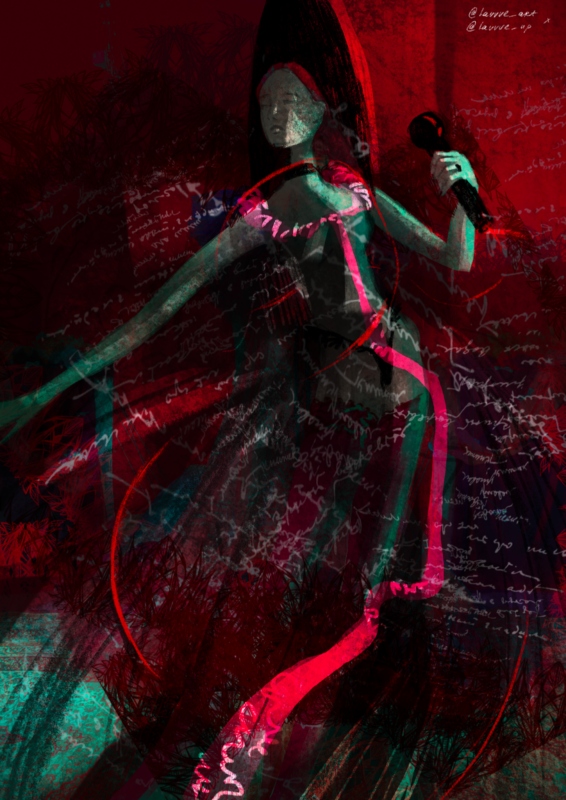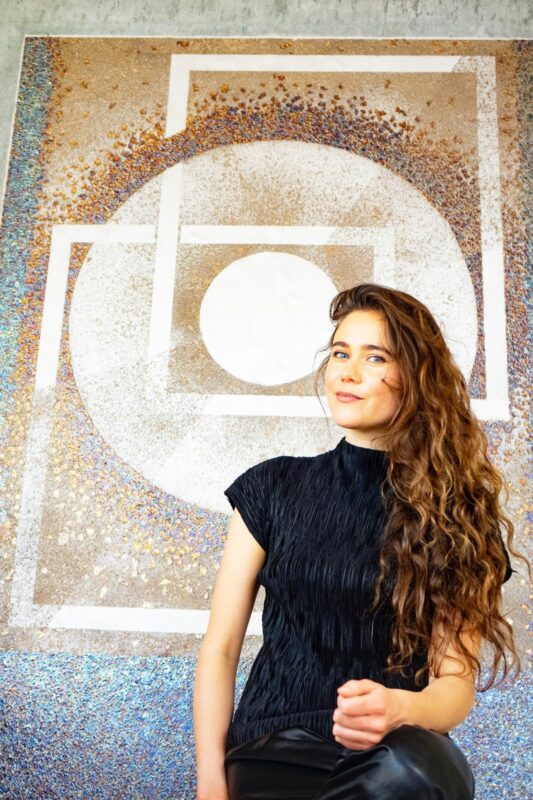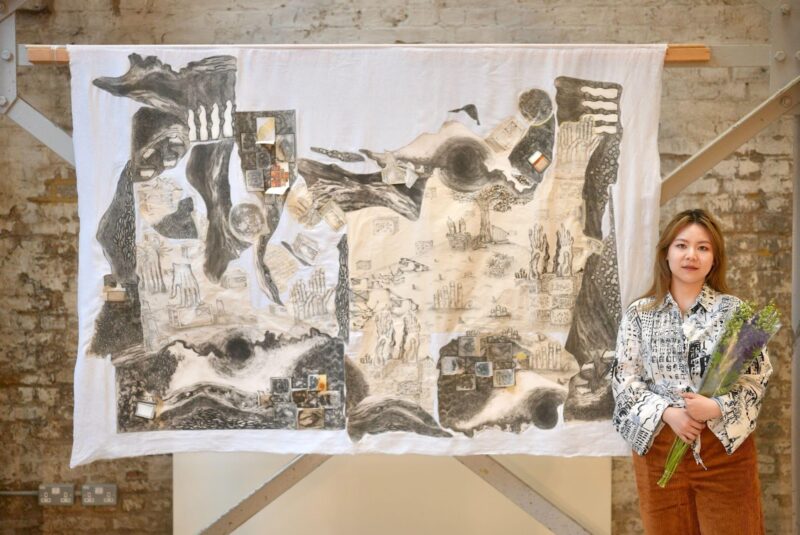
Yi-Chiao Chen’s art captures the transformative power of energy and its profound connections to the natural elements, exploring the unseen forces that shape existence. For Chen, this energy—rooted in an eternal, intangible source—is serene yet elusive, defying the confines of language. Through abstract and impressionistic forms, she translates this enigmatic essence into visual expressions, rendering the invisible tangible.
To Chen, art is an ongoing journey of creation and self-discovery, a process she describes as “perpetual self-ignition.” Her work reflects a continuous exploration of spirituality, consciousness, and the dynamic relationship between humanity and nature. Energy, as both a presence and a cyclical force, serves as a central theme, anchoring her life and profoundly shaping her artistic vision.
Water as Metaphor and Medium
In her recent New York exhibition, Waves (September 4–23, 2024), Chen embraced water as a primary motif, using its fluidity as a metaphor for spiritual transformation. Her mastery of form and technique allowed her to reveal hidden layers within her compositions, creating works that exist in the liminal space between abstraction and representation. These pieces invite viewers into a rich, reconstructive visual language that transcends mere depiction, expanding perception and reshaping how reality is understood.

Chen’s seascapes, in particular, embody a delicate balance between the real and the idealized. Her use of partially realized forms hints at a larger interconnected system, embracing intentional ambiguity to encourage diverse interpretations. By blending colors, shapes, and textures into lyrical compositions, her work invites viewers to experience the world anew, free from conventional constraints. In capturing fleeting perceptions of time and space, she imbues her art with a timeless quality, creating works that linger in the mind long after they are seen.
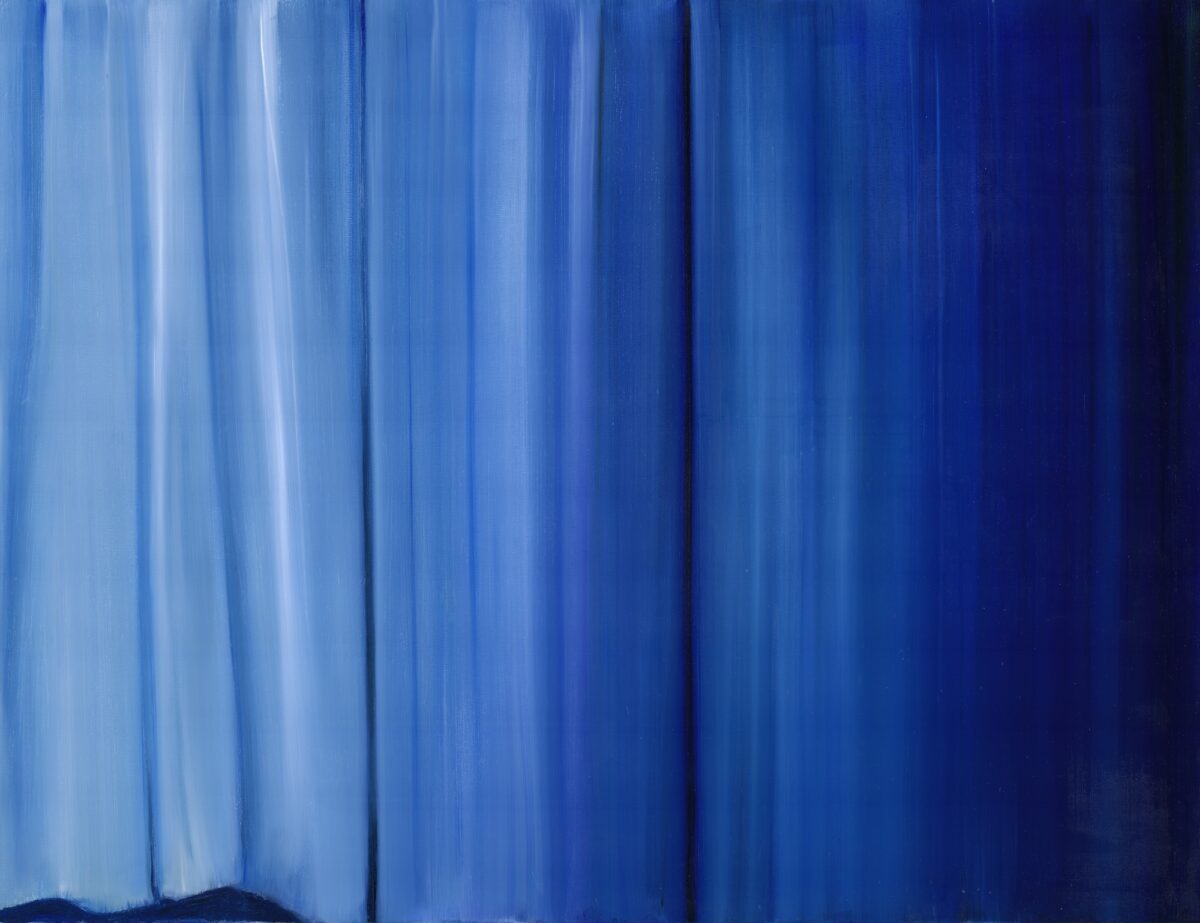
“For me, blue is the most natural and transcendent of colors,”
Chen reflects.
“It flows effortlessly between the abstract and the real, embodying the essence of both nature and dreams.”
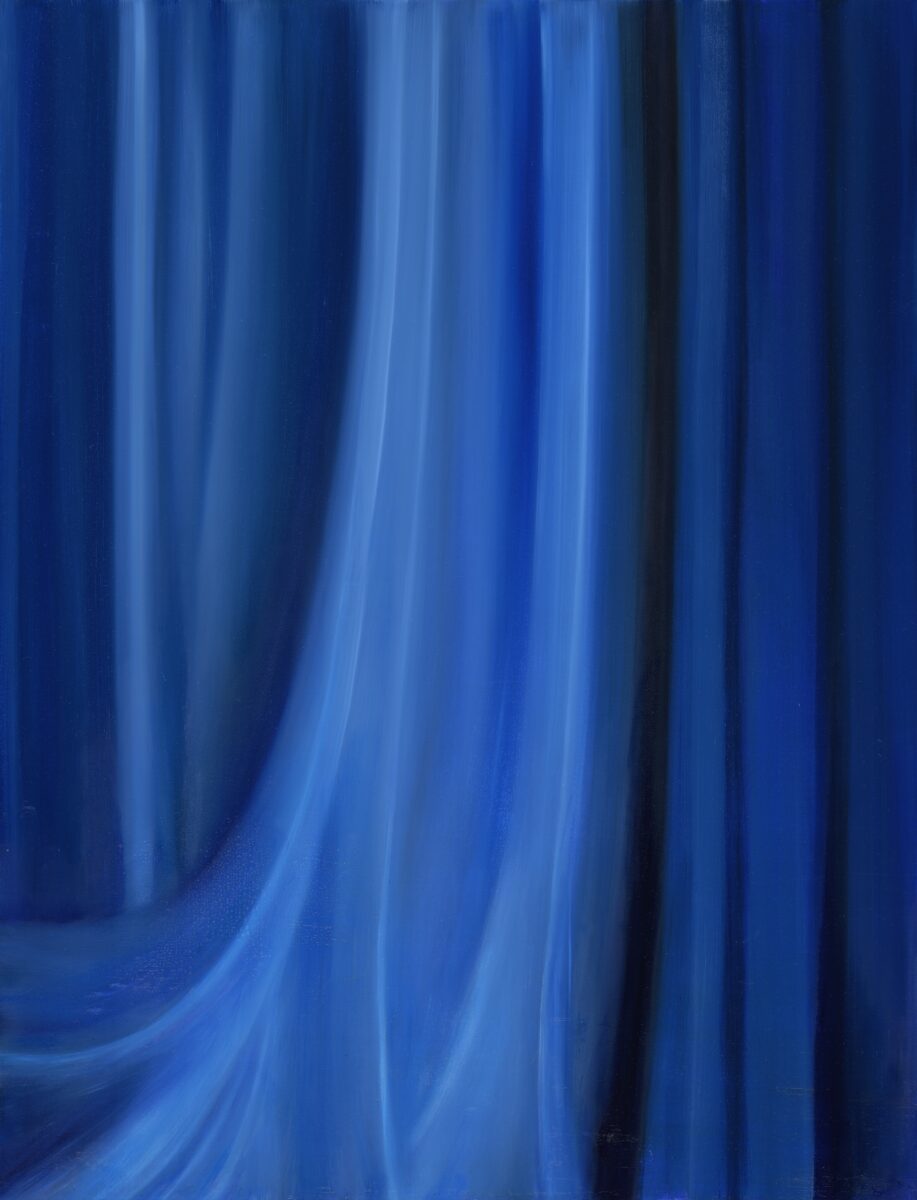
Blue plays a central role in her pieces, such as The Blue of Faith and The Sea Blue of Our Virgin. Chen explores the interplay of light and shadow within the vast spectrum of blue, employing its transformative qualities to symbolize hope, peace, and purity. By layering blue with gold, she evokes shifting spaces and moods, capturing the tranquil persistence of nature in dynamic, meditative brushstrokes.
Bridging the Past and Present: The Virgin and Child Series
Chen’s Virgin and Child series further expands her exploration of timeless themes by examining the power of the gaze as a visual language. For Chen, the gaze transcends simple “watching” or “seeing,” evolving into a reciprocal act of “seeing and being seen.” This series reflects her perspective as a mother, using visual art to communicate emotional depth and foster a dialogue with contemporary audiences.
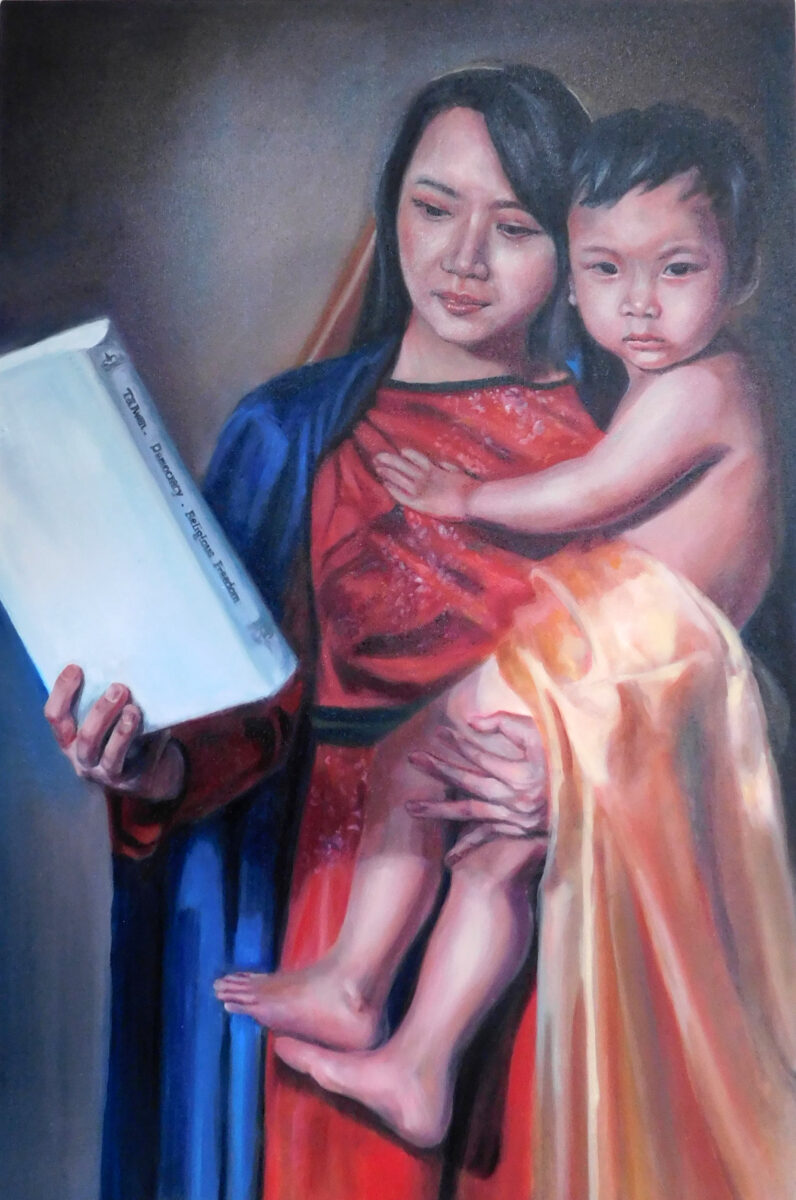
The concept of the gaze in Chen’s work extends beyond visual observation to explore identity, relationships, and interconnectedness. She delves into themes of gender, religion, and the mother-child bond, forging a link between the viewer’s personal identity and the emotions evoked by her imagery. In the context of religion, the gaze acquires a dual significance, intertwining personal introspection with collective cultural symbols and norms.
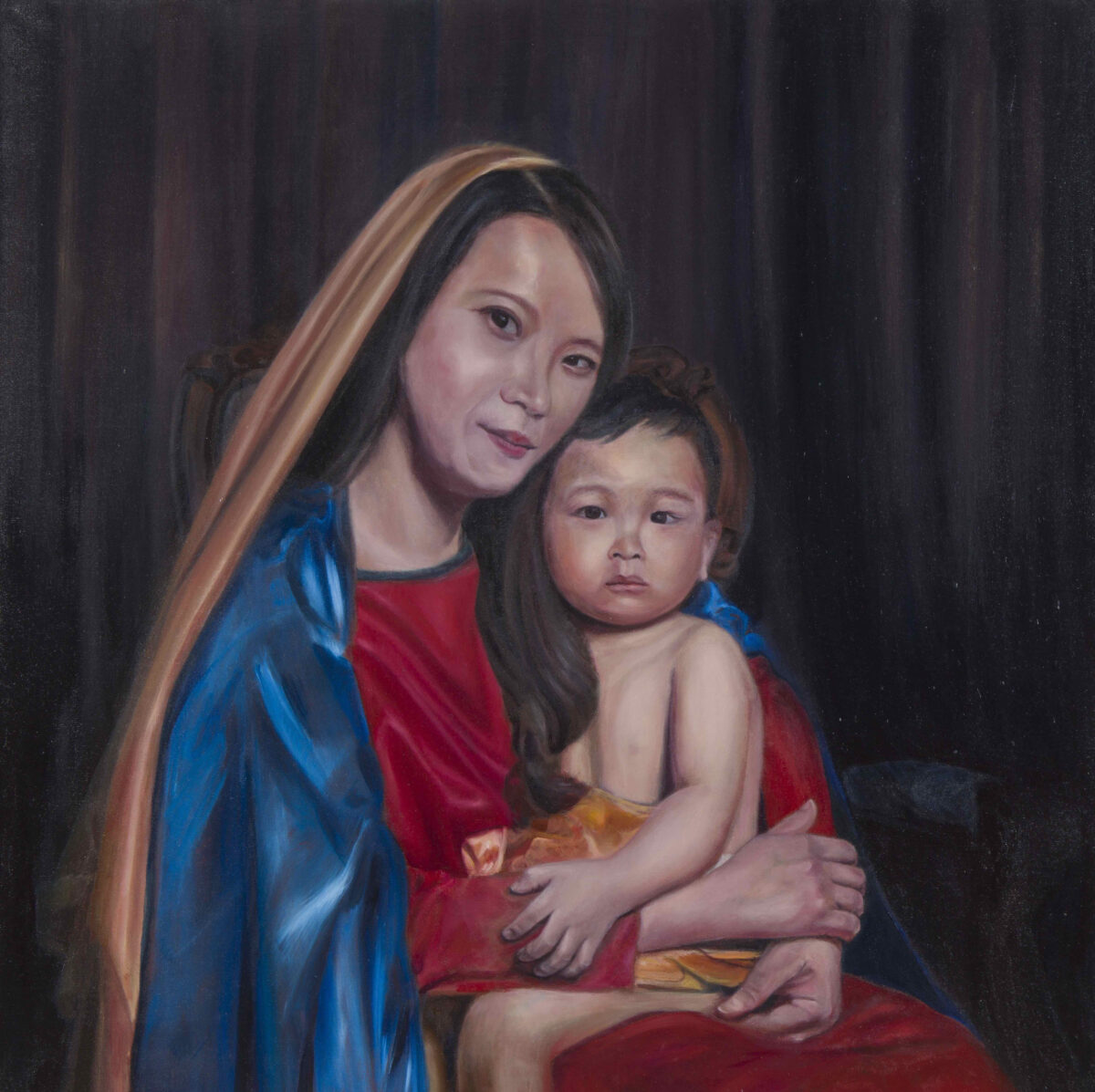
Drawing on the historical tradition of Madonna icons, Chen reimagines these representations with a modern sensibility. Traditionally, the Virgin Mary is depicted in blue, symbolizing faithfulness, constancy, and spiritual purity. However, Chen shifts this convention by using blue as a background rather than adorning the Madonna’s garments. This deliberate choice emphasizes the radiance of the golden fabric worn by the central figure, creating a luminous and transcendent aura.
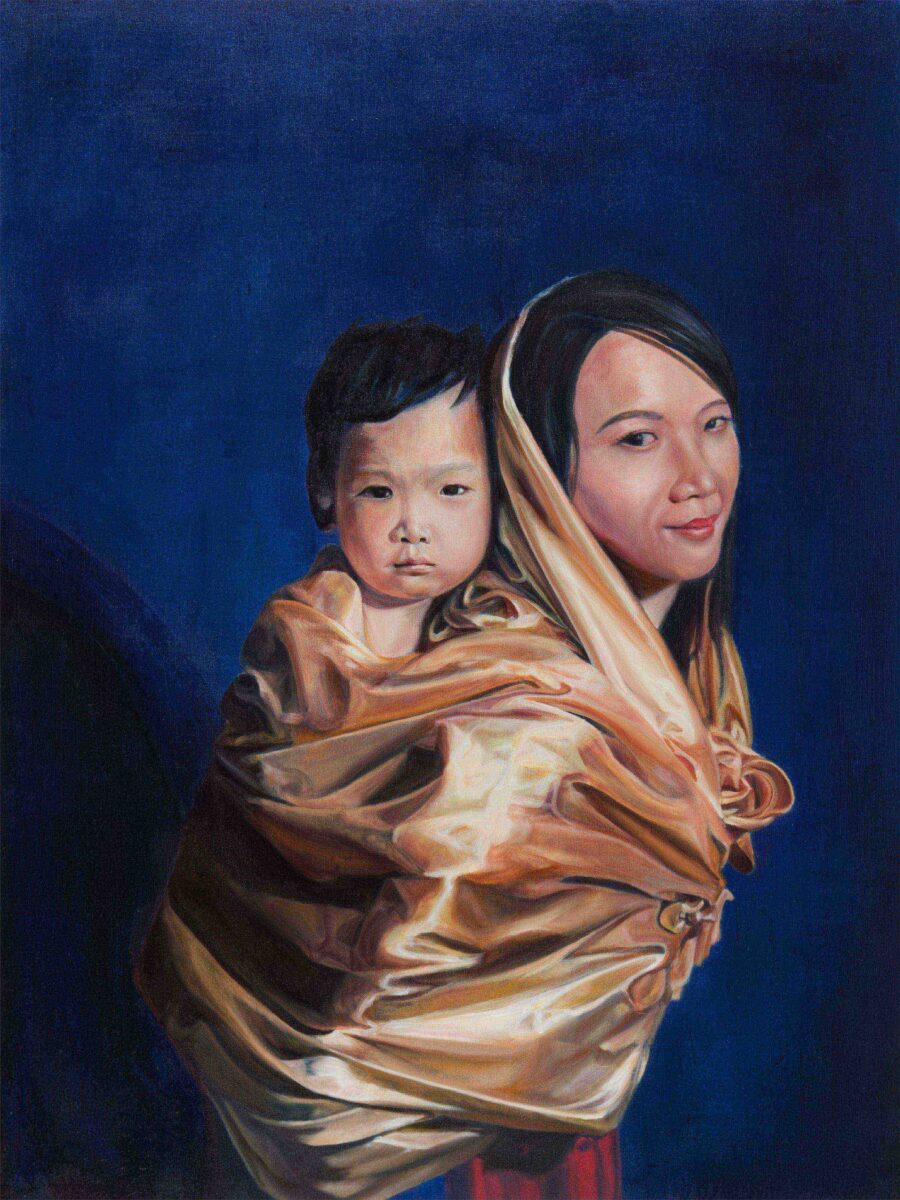
As Peggy Orenstein notes, blue has long been associated with the Virgin Mary and her spiritual essence. In Virgin and Child, Chen employs this color not only as a nod to tradition but as a tool to highlight the interplay of divinity and humanity in her compositions. The golden tones of the Madonna’s clothing and skin contrast with the vibrant blue backdrop, underscoring the sacred and maternal aspects of the figure.
Transcendence Through Art
Across her body of work, Chen seeks to bridge the mythical, the modern, and the deeply personal. Her art evokes what Thomas Weiskel terms the “humanistic sublime”—a paradoxical union of transcendence and grounded humanity. This sense of awe and wonder is mirrored in her exploration of water as a symbol of dissolution, rebirth, and transformation. Mircea Eliade’s view of water as a medium that dissolves boundaries resonates strongly in Chen’s fluid abstractions, which dissolve form into primal, unconscious landscapes.

Chen’s compositions occupy the space between recognition and obscurity, where abstraction becomes a synthesis of time and experience. Her remarkable emotional intelligence and aesthetic sensitivity shine through, recalling John Keats’ poetic line: “the moving waters at their priestlike task of pure ablution.”
Through her haunting, evocative imagery, Yi-Chiao Chen crafts an interplay of sensory, mythical, and spiritual themes, offering a vision that is both personal and universal. Her art transcends boundaries, transforming how we see and experience the world through her intricate visual language.
Follow: yichiaochen.com and @yichiaochen_art
